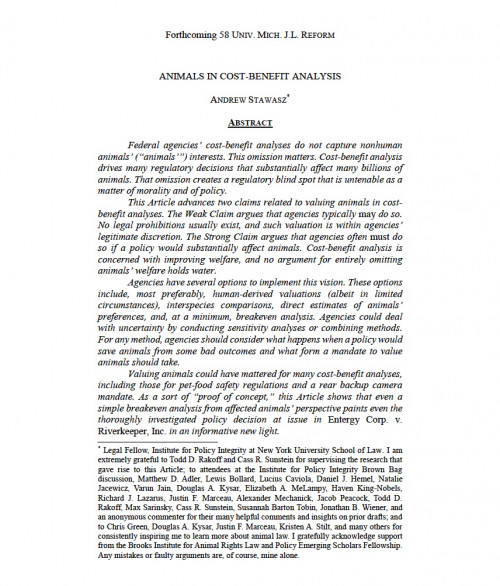Federal agencies’ cost-benefit analyses do not capture nonhuman animals’ interests. This omission matters. Cost-benefit analysis drives many regulatory decisions that substantially affect many billions of animals. That omission creates a regulatory blind spot that is untenable as a matter of morality and of policy.
This Article advances two claims related to valuing animals in cost-benefit analyses. The Weak Claim argues that agencies typically may do so. No legal prohibitions usually exist, and such valuation is within agencies’ legitimate discretion. The Strong Claim argues that agencies often must do so if a policy would substantially affect animals. Cost-benefit analysis is concerned with improving welfare, and no argument for entirely omitting animals’ welfare holds water.
Agencies have several options to implement this vision. These options include, most preferably, human-derived valuations (albeit in limited circumstances), interspecies comparisons, direct estimates of animals’ preferences, and, at a minimum, breakeven analysis. Agencies could deal with uncertainty by conducting sensitivity analyses or combining methods. For any method, agencies should consider what happens when a policy would save animals from some bad outcomes and what form a mandate to value animals should take.
Valuing animals could have mattered for many cost-benefit analyses, including those for pet-food safety regulations and a rear backup camera mandate. As a sort of “proof of concept,” this Article shows that even a simple breakeven analysis from affected animals’ perspective paints even the thoroughly investigated policy decision at issue in Entergy Corp. v. Riverkeeper, Inc. in an informative new light.

